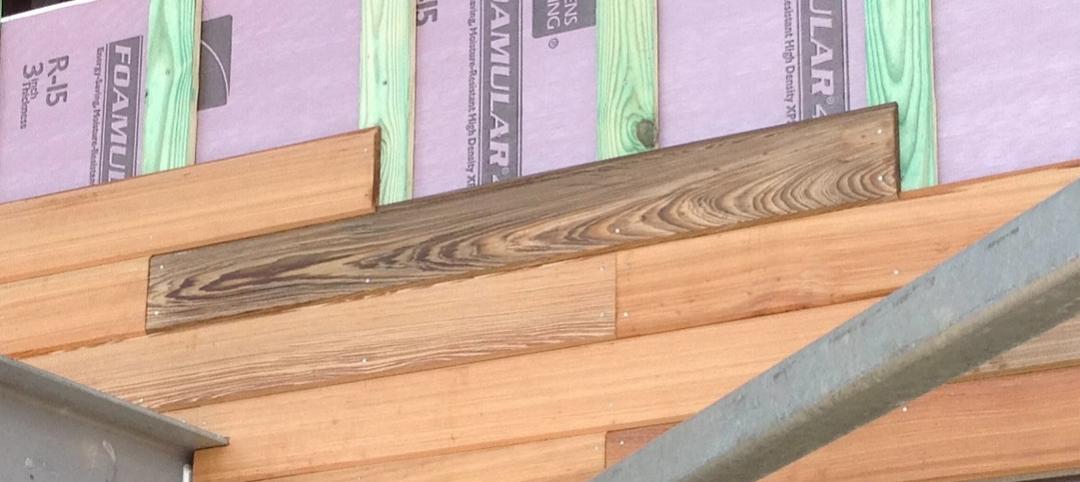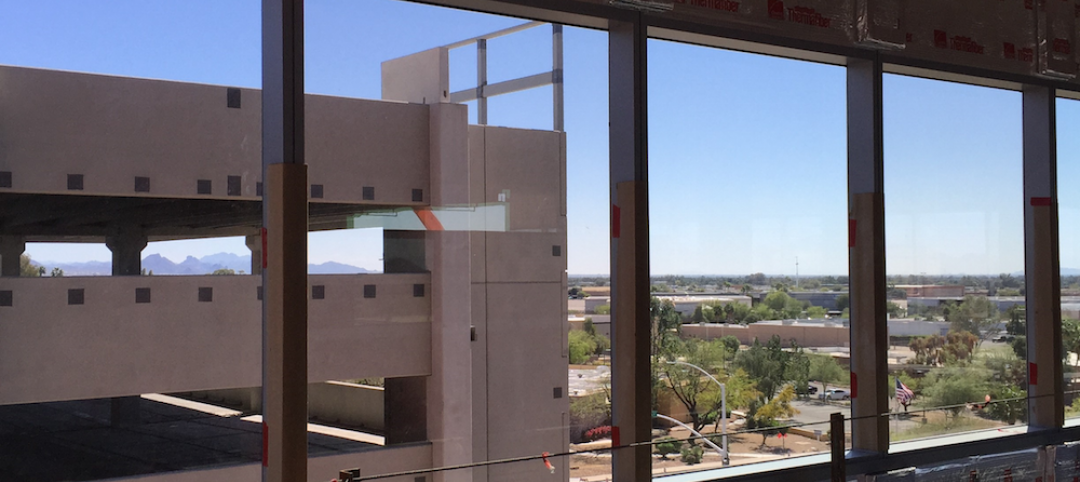From 2012 to 2014, about 5,700 medical facility fires were reported each year to fire departments in the United States, according to the U.S. Fire Administration. While this number has been declining over the last couple of decades due to improvements in regulations, staff training, and building materials, designing for fire safety remains a key concern for healthcare architects.
Tiffany Coppock, commercial building systems specialist at Owens Corning and former healthcare architect, says a key part of designing for fire safety includes proper compartmentalization of spaces. Preventing the spread of fire and smoke is critical to the health and safety of building occupants, especially patients who are not capable of self-preservation.

This plan demonstrates compartmentalization of a suite.
In the event of a fire, it is important that the affected area can be architecturally “locked down” and contained so that any damage and need for evacuation is minimized.
“The idea is to compartmentalize a fire, using passive fire containment construction and active mechanical systems to contain the hazards of combustible medical supplies, heat, smoke, and potential growth/spread to one space so that active fire suppression and fire fighters can contain and extinguish,” Coppock says. “It is possible to have a fire in an area of these buildings while the remainder of the building is completely unaware. They are still able to function and perform surgery or other critical procedures.”
One aspect of creating strong compartments is to create fire resistance rated wall, ceiling, and floor assemblies that contain non-combustible insulation products contributing to fire resistance. With today’s innovations, insulation products are expanding beyond simple thermal insulation properties to offer everything from enhanced acoustic performance to fire resistance to firestopping.
“Thermal performance is just a portion of the function. Now designers are exploring and learning what else the insulation product can do,” Coppock says.
Owens Corning’s formaldehyde-free Thermafiber® mineral wool insulation, introduced last year, is completely non-combustible and resists temperatures over 2,000 degrees Fahrenheit. Using fire test standards such as NFPA 285 (fire propagation resistance) and ASTM E119 (structural fire resistance), Owens Corning develops assembly testing and performance knowledge to add value to the development of fire-resistant building materials.

A door to pathology, a protected area where chemicals are stored.
Because many hospitals and clinics are built for long-term operation — many easily operating over 30 years — Coppock says it is important to remember that they must accommodate change readily with little disruption, with potential new compartmentalization needed each time an addition or renovation is made. A space that did not previously need to be compartmentalized for fire or smoke may have a new piece of equipment or may be used for patients who are sedated, requiring new design accommodations.
Healthcare facilities are constantly renovating, upgrading and expanding. They have unique life safety challenges and can be more vulnerable to fire given the chemicals and heat-producing equipment present. Therefore, designing for fire safety using fire resistant and easily installed mineral wool in properly designed assemblies is especially critical in these settings.
Related Stories
Cladding and Facade Systems | Jun 5, 2023
27 important questions about façade leakage
Walter P Moore’s Darek Brandt discusses the key questions building owners and property managers should be asking to determine the health of their building's façade.
Sponsored | Building Enclosure Systems | May 16, 2023
4 steps to a better building enclosure
Dividing the outside environment from the interior, the building enclosure is one of the most important parts of the structure. The enclosure not only defines the building’s aesthetic, but also protects occupants from the elements and facilitates a comfortable, controlled climate. With dozens of components comprising the exterior assemblies, from foundation to cladding to roof, figuring out which concerns to address first can be daunting.
75 Top Building Products | Dec 16, 2019
Top Glass and Glazing Products for 2019
SageGlass's Harmony dynamic glass and Vitro Architectural Glass's Acuity low-iron glass are among the nine new glass and glazing products to make Building Design+Construction's 2019 101 Top Products report.
Sponsored | | Feb 28, 2018
Quality Products Needed To Meet Green Building Standards Today
Sustainable healthcare facilities will need energy-efficient building enclosures from the outset.
Sponsored | | Jan 16, 2018
Healthcare Facilities Present Unique Building Design Concerns
With longevity, air quality, patient outcomes, and wellness in mind, AEC teams want to make sure they’re choosing the best building design products
Sponsored | | Dec 28, 2016
The Evolution of Sustainability and Product Transparency in Building Science
Sustainability now a core business strategy for manufacturers and AEC firms alike
Sponsored | | Nov 15, 2016
Helping to Protect the Perimeter Proactively
Incorporating more fire containment tactics to building enclosures benefits both architects and end user occupants alike
Sponsored | | Sep 9, 2016
The Complexity of Building Enclosures as a Critical Layer of Protection
AEC teams must approach building enclosures with everything—moisture, thermal, air, fire—in mind













